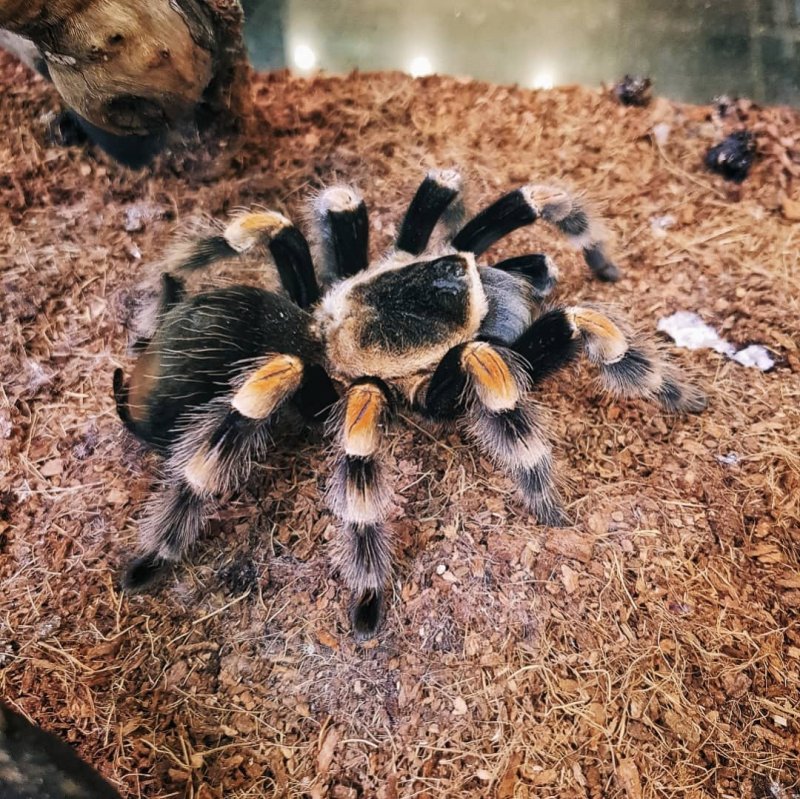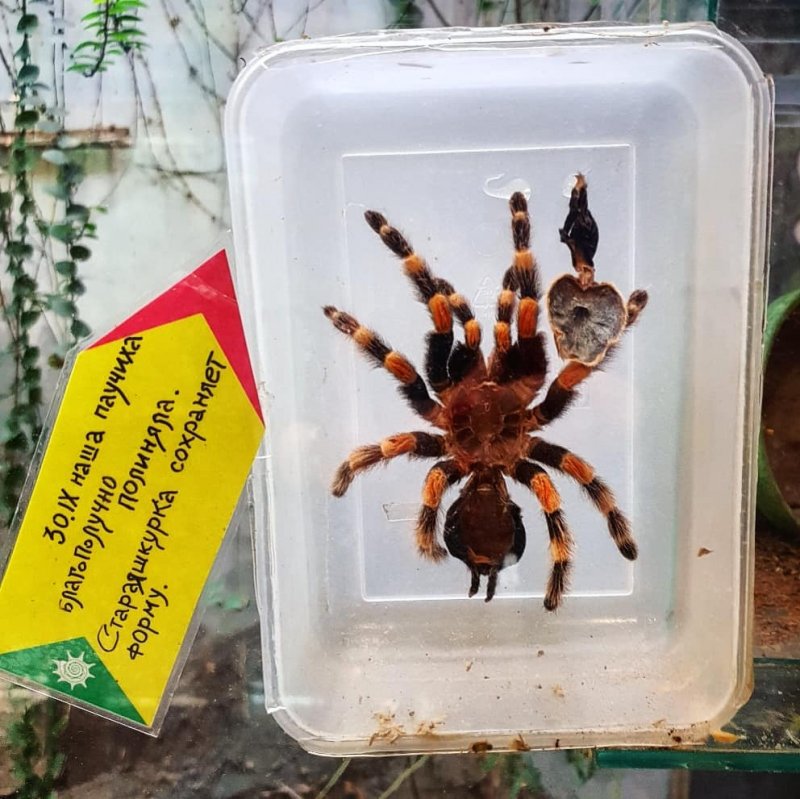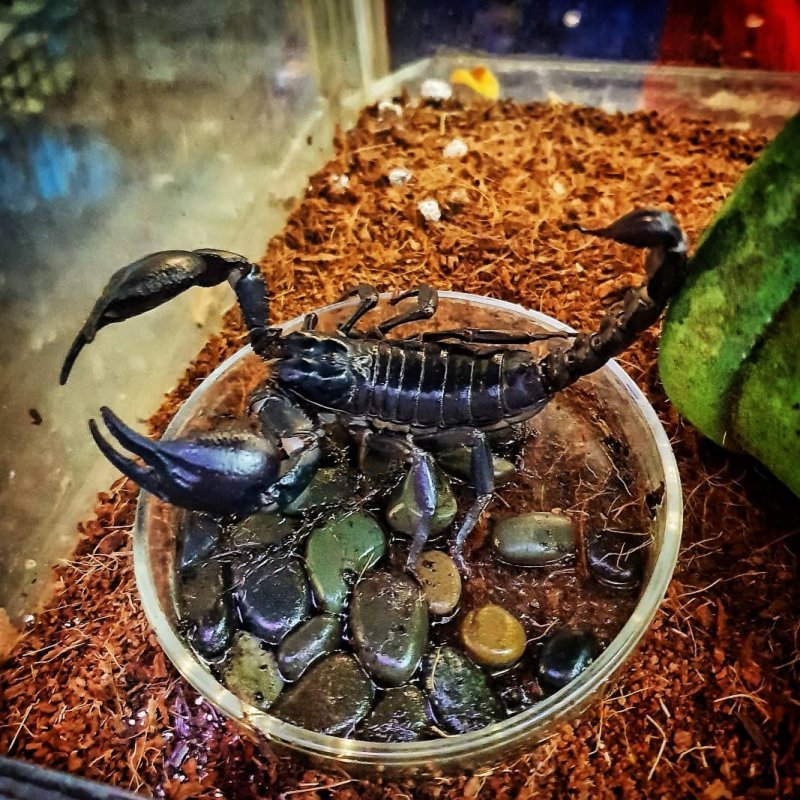A Spider & A Scorpion
Meet the
fabulous Markosha – a Mexican redknee tarantula (Brachypelma smithi). This
female spider has been living at the Darwin museum “Nature Live Exhibition” for
more than 6 years.

It’s
interesting to know, that female tarantulas tend to live a lot longer (up to 20
years and even more) than males, as the latter die relatively soon after
maturing. Apart from that sexual dimorphism is not very pronounced: males tend
to be a little smaller than females, they usually have slightly shorter bodies
and longer legs.
Every year
Markosha likes to change her “look”. We get many complaints from our visitors
about spider cannibalism, so we put a sign explaining that it’s not a dead
tarantula, it’s simply an old “outfit” of our spider-lady.

The scientific name
for the process of shedding the exoskeleton, which allows spiders to grow, is
called molting. Our Markosha is a mature tarantula who does shedding only once
a year, compared to young who do it more frequently as a part of the growing up
process. An adult tarantula does it to replace lost limbs or lost urticating
hairs. Right before the process begins, Markosha stops feeding and becomes more
lethargic, her exoskeleton takes on a darker shade. If a tarantula previously
used its urticating hairs, the bald patch turns from a peach color to deep
blue.
The bite of
a tarantula is unpleasant, but not dangerous for humans. Maybe, that’s why they
are so popular as pets. However, the hairs they brush off when stressed may
cause allergy, so we don’t allow tactile contact with visitors, demonstrating
our lovely Markosha from a safe distance.
Our
Markosha belongs to the species of a terrestrial tarantula native to the
Pacific coast of the Mexican state of Guerrero. The natural habitat of the
species is in hilly deciduous tropical forests. It constructs or extends
burrows under rocks and tree roots, among dense thickets and deciduous forests.
The deep burrows keep them protected from predators and enable them to ambush
passing prey. The females spend the majority of their lives in their burrows.
When the tarantula needs privacy, e.g. when molting or laying eggs, the
entrance is sealed with silk, sometimes supplemented with soil and leaves.
Another one
extraordinary lady, Markosha’s neighbor, is Naesha – a female scorpion. The two
have something in common – they both are not insects, but belong to the class
Arachnida.

Scorpions
are predatory arachnids of the order Scorpiones, who have 8 legs and are easily
recognized by the pair of grasping pedipalps and the narrow, segmented tail,
ending with a venomous stinger. Although, our Naesha has lived with us for
quite some time and has become “domestic”, she is a lady with an attitude,
therefore our visitors can admire her from a safe distance.
In 2015 Naesha
became a happy mother of 22 baby scorpions. The size of the litter depends on
the species and environmental factors and can range from 2 to more than 100
scorpions (the average litter is about 8).
Unlike the
majority of species in the class Arachnida, scorpions seem to be universally
viviparous, which means that embryos develop inside the body of the parent,
leading the latter to the process of giving birth. Soon after the birth the
young climb onto their mother’s back and get carried around until they have
undergone at least one molt (around 2 weeks). Before the first molt, young
scorpions cannot survive naturally without the mother, since they depend on her
for protection and to regulate their moisture levels. It takes 2-3 years for
them to mature with having to undergo several molts.
Although,
scorpions are not usual inhabitants of cities, their number in industrial and
residential areas has greatly increased for the past several decades due to the
lack of predators, readily available shelter, and abundance of insect prey.










